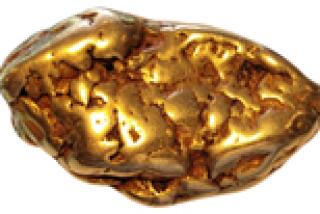Ways to Get Started in Numismatics
- Share via
Question: Can you help me learn more about numismatics? Put me in touch with coin collectors and give me similar assistance?--D.B.
Answer: Your letter is typical of many I receive concerning coin collecting. Obviously, the first step is to get involved with numismatics. There is no one correct way. Three entry levels come to mind: Read books on the subject, haunt coin shops and learn as much as you can through conversations and observation, join a coin club.
First things first. There are many, many books on coin collecting. Start with some that are general in nature. Later, if you decide to specialize, you can concentrate on a particular coin or set or country. The choices are virtually unlimited, depending upon your resources and energy.
As for dealers, most are knowledgeable and helpful. But, like collectors, they too can specialize. Talk to as many as possible, let them help you learn about grading and pricing, test them out with a few purchases and then start to build your collection. Consider this to be a hobby that might turn into a good investment in the future.
Then we come to clubs. There are 60 listed in the Numismatic Assn. of Southern California bulletin. Some are clubs for collectors having a general interest and others are for specialists, such as the American British Numismatic Society, the Azteca Numismatic Society, the Israel Numismatic Society, the Society for International Numismatists and the Southern California Ancient Numismatic Society. You can probably be put in touch with a club nearest to you through a local dealer, or contact the Numismatic Assn. of Southern California, Box 5173, Buena Park, Calif. 90622.
It really doesn’t matter how you get started, as long as you get off to a good start. Always try to purchase the highest quality coins you can afford. Uncirculated Mint State coins are the ones that traditionally have the best record of appreciation.
Q: In the last few years, I have saved some Lincoln wheat cents, Jefferson nickels, Kennedy halves, Ike dollars, Bicentennial quarters and Susan B. Anthony dollars from circulation. Are some of them at all worth keeping?--R.K.
A: The chances of finding valuable coins in circulation are slight. Wheat cents might be worth 1 1/2 cents each. Probably your other coins are just worth face value, unless they contain silver or were proof specimens that somehow got into circulation. Silver coins were minted through 1964. Coins with 40% silver were minted to 1969. Check with a coin dealer if you have any doubts.
Coin News
A commemorative card featuring a replica of a $10 gold certificate, Series 1907 (pictured), will be issued by the Bureau of Engraving and Printing in conjunction with the Long Beach Numismatic & Philatelic Fall Exposition, today through Sunday (see Coin Calendar for details). Souvenir cards complemented by a block of four 50-cent Prospector stamps will be $3 at the show. Orders by mail are $4 ($4.50 for canceled cards) from the Bureau of Engraving and Printing, Mail Order Sales, Room 602-11A, 14th and C streets S.W., Washington, D.C. 20228. Specify item No. 932 for souvenir cards, item No. 933 for canceled cards.
A two-day authentication and grading workshop on U.S. gold coins is being sponsored Oct. 18 and 19 by the Numismatic Assn. of Southern California. The workshop will be conducted by the American Numismatic Assn. Certification Service at Cal Poly Pomona. Fees, which include two breakfasts, lunches and refreshment breaks, are $50 for members, $70 for non-members. For information, contact Harold Katzman, 1504 W. Rosewood Court, Ontario, Calif. 91762.
Two recent sales by Auctions by Bowers & Merena recently recorded substantial sums. The Abe Kosoff collection grossed $3.1 million, and was highlighted by a rare, extremely high-relief 1907 double eagle with a Roman numeral date. This coin, one of only 12 to 15 known, realized $264,000. At another auction, the Princeton Collection and the Dr. Charles W. Ingle Collection brought in $1.5 million. An 1869 proof set sold for $23,000, while an undated (circa 1652) New England silver shilling brought $16,500 and a rare 1918/7-D overdate Buffalo nickel went for $13,200. Catalogues, including prices realized, are available for $10 each from Auctions by Bowers & Merena, Box 1224-NR, Wolfeboro, N.H. 03894.
Coin Calendar
Today, Friday, Saturday and Sunday--More than 400 dealers are expected at the ninth annual Long Beach Numismatic & Philatelic Fall Exposition. The show at the Long Beach Convention Center runs 10 a.m. to 8 p.m. today, Friday and Saturday; 10 a.m.-4 p.m. Sunday. Highlights include an auction, a booth and forum for junior collectors, meetings by specialist groups and a silver dollar forum. The new U.S. $50, $25, $10 and $5 gold bullion coins will be displayed for the first time at any show. For information, call (213) 436-3636.
Don Alpert cannot answer mail personally but will respond to numismatic questions of general interest in this column. Do not telephone. Write to Your Coins, You section, The Times, Times Mirror Square, Los Angeles 90053.


